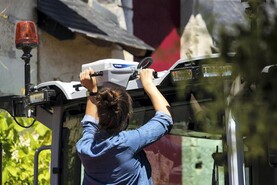It’s a delicate balance in the Highlands, according to this week’s report into the future of agriculture and associated land use in the region. As the report suggests, many of the internationally valued, semi-natural habitats are maintained through low-intensity grazing, so taking stock off or putting too much on would destroy the balance. This makes a level of continuity throughout Brexit a challenge, since farming in these regions is more exposed to lamb market volatility, along with Government support changes. However, there are good reasons to be positive for the Highlands; they are at the heart of a growing tourist industry. This provides significant opportunity for farmers, but the infrastructure needs to be there to get the food to market. Recent closures and threats to abattoirs in Orkney and Elgin show how vulnerable these supply chains are.
Farming Minister Fergus Ewing MSP likes to be quoted as being prepared to go to war to safeguard hill farming.
Furthermore, outside the EU there is the ability to finetune our upland support more closely to the requirements. This more flexible approach offers exciting opportunities to do things differently and get a tighter link with the public.
Setting rules from Brussels has lost the connection with why the public should support farming, ultimately storing up trouble for a later day. However, we must be prepared for some uncomfortable realisations when support rules are set closer to home.
What hill farming will look like is a tricky question. Hill farmers and crofters are stewards of more of the countryside than low-ground farmers. The environmental evidence shows that food production and environmental good often gets along better than in more intensive systems.
But we need to be mindful of the dangers when dealing with a broader spectrum of outcomes demanded on the hill farm. This could make decisions harder to make and planning for the future difficult. The current uncertainty is stifling investment and needs to end as quickly as possible.
It’s a delicate balance in the Highlands, according to this week’s report into the future of agriculture and associated land use in the region. As the report suggests, many of the internationally valued, semi-natural habitats are maintained through low-intensity grazing, so taking stock off or putting too much on would destroy the balance. This makes a level of continuity throughout Brexit a challenge, since farming in these regions is more exposed to lamb market volatility, along with Government support changes. However, there are good reasons to be positive for the Highlands; they are at the heart of a growing tourist industry. This provides significant opportunity for farmers, but the infrastructure needs to be there to get the food to market. Recent closures and threats to abattoirs in Orkney and Elgin show how vulnerable these supply chains are.
Farming Minister Fergus Ewing MSP likes to be quoted as being prepared to go to war to safeguard hill farming.
Furthermore, outside the EU there is the ability to finetune our upland support more closely to the requirements. This more flexible approach offers exciting opportunities to do things differently and get a tighter link with the public.
Setting rules from Brussels has lost the connection with why the public should support farming, ultimately storing up trouble for a later day. However, we must be prepared for some uncomfortable realisations when support rules are set closer to home.
What hill farming will look like is a tricky question. Hill farmers and crofters are stewards of more of the countryside than low-ground farmers. The environmental evidence shows that food production and environmental good often gets along better than in more intensive systems.
But we need to be mindful of the dangers when dealing with a broader spectrum of outcomes demanded on the hill farm. This could make decisions harder to make and planning for the future difficult. The current uncertainty is stifling investment and needs to end as quickly as possible.






 This is a subscriber-only article
This is a subscriber-only article









SHARING OPTIONS: